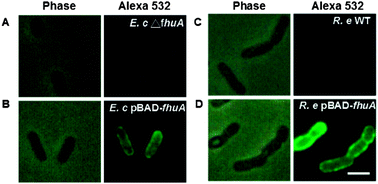Functionalizing bacterial cell surfaces with a phage protein†
Abstract
Functionalization of bacterial cell surfaces has the potential to introduce new activities by chemical modification. Here we show that a bacteriophage–receptor complex can be used to functionalize the surface of two Gram-negative proteobacteria, Escherichia coli and Ralstonia eutropha with CdSe/ZnS


 Please wait while we load your content...
Please wait while we load your content...